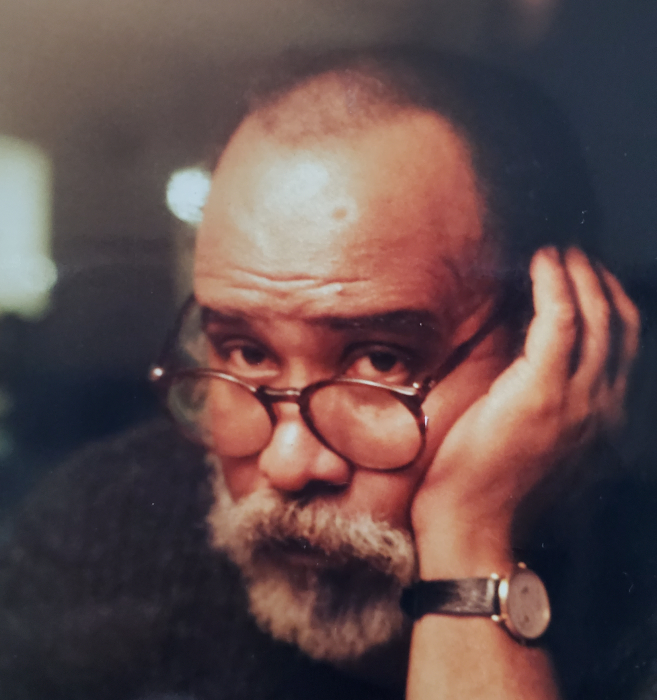The Harvard Graduate School of Design honors Donald L. Stull, FAIA (MArch ’62), a groundbreaking architect who led noteworthy, award-winning, transformative design projects and who supported and amplified the unique contributions of Black architects and designers. In a remarkable career, Stull founded two firms that were owned and led by Black architects, through which he would shape cityscapes, harmonize architecture and social change, and inspire countless colleagues and mentees.
Stull died on November 28, 2020, at his home in Milton, Massachusetts. He was 83 years old.
Stull was born in Springfield, Ohio, on May 16, 1937, and took an early interest in architecture while accompanying his uncle, a bricklayer, to construction sites. He graduated with a bachelor’s degree in architecture from Ohio State University in 1961, then received a master’s in architecture from Harvard GSD in 1962. In 1970, he received the Distinguished Alumni Award from Ohio State; Boston Architectural College awarded him an honorary degree in 2011.
After graduating from the GSD, Stull would go on to work with the Architects Collaborative in Cambridge, co-founded by Walter Gropius, as well as Samuel Glaser Associates in Boston. In 1966, Stull established Stull Associates, at a time when, it is believed, there were only a dozen Black architects in the United States. In 1969, Stull hired M. David Lee, who was a GSD student at the time; the firm became Stull and Lee Incorporated in 1986.
“There was a confidence about him that radiated. And people liked to listen to him,” Lee told the Boston Globe. “He was so skillful in terms of his thinking and his ability to draw and frame design opportunities that I think people enjoyed being brought into that discussion.”
Stull and Lee Incorporated grew its practice from residential design to major building projects across Boston, earning awards at the highest level of the profession. Stull and Lee received the American Planning Association/Massachusetts Chapter Social Advocacy Award, and earned the American Institute of Architects Honor Award for Architecture as well as the Boston Society of Architects Honor Award for Design for their Ted Williams Tunnel design. Stull and Lee coordinated the design of nine of the city’s Orange Line subway stations, as well as a miles-long park running above them; this work earned them the Presidential Design Award from the National Endowment for the Arts. In particular, Stull and Lee designed the Orange Line’s Ruggles Station, which would emerge as a Boston landmark; the vaulted walkway at the Ruggles Station, connecting Columbus Avenue and the Northeastern University campus, was a particular point of pride for Stull.
Among other projects, Stull and Lee designed Boston’s Roxbury Community College and the Harriet Tubman House, and were lead architects and master planners for the $747 million Southwest Corridor project. In 2004, Stull discussed his design philosophy behind the Roxbury Community College project:
I think a bit philosophically in the way I think about design. If one is going to design an educational facility, it’s my view that you first need to ask and answer questions regarding, what is education, what is learning? And then begin to evolve a design that’s responding to and answering those questions. When I did Roxbury Community College, the question for me at the time was that learning… is an interactive process, that it’s an interaction between student and books, student and teacher, teacher and teacher, student and student, student and environment.
For example, in a learning objective in design, we know that from a physical point of view, from a scientific point of view, the shortest distance between two points is a straight line. Therefore, the most efficient way to get from one place to another place is that way. However, if that is in a learning environment, the critical question is not how quickly you can get there but what happens to your mind on the way? And so that may not be the shortest distance or the fastest way to get there. You may decide to take the line through a labyrinth of learning experiences.
That’s one of the reasons Roxbury Community College is not one big mega structure building, but a campus. And so I looked for ways to create the, the places within that environment where one could enjoy the interactive process of learning at very many different levels. We’ve got some sculptures sitting in different places, places where you can sit outside quietly and contemplate the places and all the buildings wherein that kind of interactive process can happen.
“He was a brilliant draftsman, a wonderful designer, and a thoughtful, philosophical practitioner,” Lee observes in the Boston Globe. “He enjoyed the respect of his peers.”
Alongside built work, Stull devoted his focus and energy to amplifying the contributions of Black architects and designers. Of note, he helped establish the New DesigNation conference; the inaugural session in Philadelphia in November 1996 gathered over 500 Black designers to examine and address the issues faced in the design professions.
Stull leaves two daughters, a son, a sister, and two grandchildren. He was predeceased by his mother Ruth Callahan Stull and his father Robert Stull of Mississippi, and longtime companion Janet Kendrick of Roxbury, Massachusetts.
